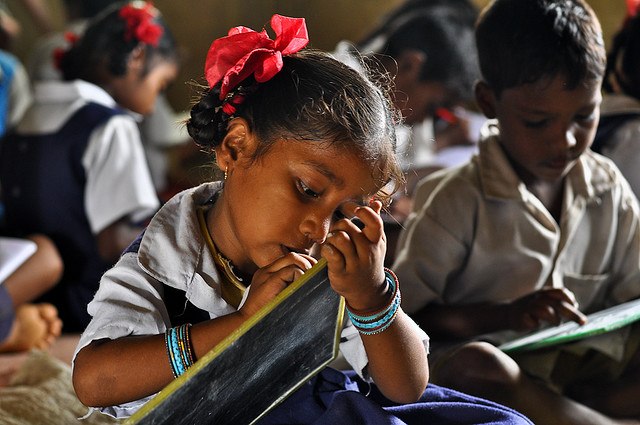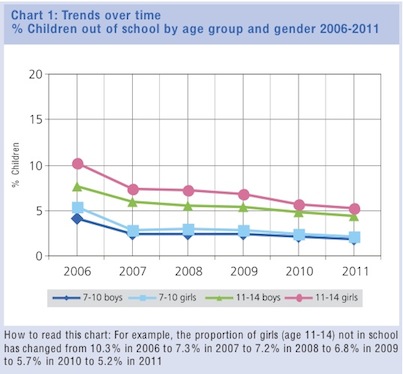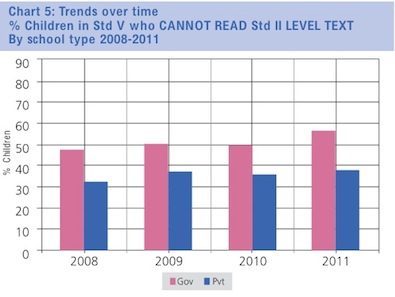
![]() A friend of mine recently pointed me towards an incredible resource. It’s called the Annual Status of Education Report (or ASER, which means impact in Hindi). ASER is an ambitious survey of the state of Indian rural education, conducted yearly since 2005, and their 2011 report came out a few days ago.
A friend of mine recently pointed me towards an incredible resource. It’s called the Annual Status of Education Report (or ASER, which means impact in Hindi). ASER is an ambitious survey of the state of Indian rural education, conducted yearly since 2005, and their 2011 report came out a few days ago.
The level of organization here is truly impressive. It’s the largest survey conducted outside the government, combining the efforts of over 25,000 young volunteers from local organizations. Together, they survey nearly 300,000 households in over 16,000 villages in all states of India, and conduct basic level reading and numeracy tests on over 700,000 children.
Behind this coordinated effort is a simple and powerful idea, that effective policy needs to be based on evidence. The report takes a refreshingly no-nonsense approach. Rather than starting off with a long list of dignitaries to thank and lofty goals to implement, ASER gets right down to the point, with figures and tables. They focus on two basic goals. How many children are enrolled in schools (and what kind of school)? And are these children learning the very basics of reading and numeracy? By comparing trends of schooling and learning in different states, they have put together the most detailed picture so far of what’s working and what isn’t in rural education. The general picture that is emerging is one of rising enrollment but declining learning outcomes, from levels that were already low.
So let’s get down to the data. While reading through the report, some surprising facts and numbers jumped out at me.
More kids are going to school than ever before. Among 6 to 14 year olds in rural India, 97% are attending school. The toughest demographic to keep in school is 11 to 14 year-old girls, and even here the numbers are improving. Attendance in this age range has gone up from 90% to 95%. This is a remarkable achievement, and a necessary first step towards a right to education.

Over a quarter of these children are now enrolled in private schools. With the new Right to Education Act, government schools are now free and, according to the statistics, are performing better than rural private schools. Nonetheless, private school education is on the rise, suggesting that there is still not enough access to the government school network.
Teachers are attending school regularly. Their attendance is at 87% (on the day of the survey). Gujarat is doing particularly well with 96% of teachers attending, and ten states have greater than 90% teacher attendance. However, as these results are based on a single day of measurement, you should take them with a grain of salt.
But the students aren’t. Student attendance is at 71%, a number that has dropped in the last four years. Some states have dropped over 10 percent here. Bihar is at the bottom of the list here, with 50% student attendance.
A quarter of all students are attending school in a language they don’t speak at home.
Half of all rural schools do not have a functioning toilet. Nearly a quarter do not have separate girls toilets. A quarter do not have access to drinking water. Adequate drinking water and functioning, separate toilets for boys and girls are now a mandated requirement by the Right to Education Act that came into effect in 2010.
More than half of students in the fifth grade can’t read at second grade level. Similar statistics arise for basic math levels. The ability to read complete sentences or add and subtract numbers is not a very ambitious standard for learning, and Indian schools are failing to achieve even this.

What’s more, the math and reading levels are falling further. Learning outcomes have fallen over the last six years. Some states have dropped by over 10 percent in the last year alone.
What could be causing this drastic decline? Continue reading The state of Indian rural education 2011

